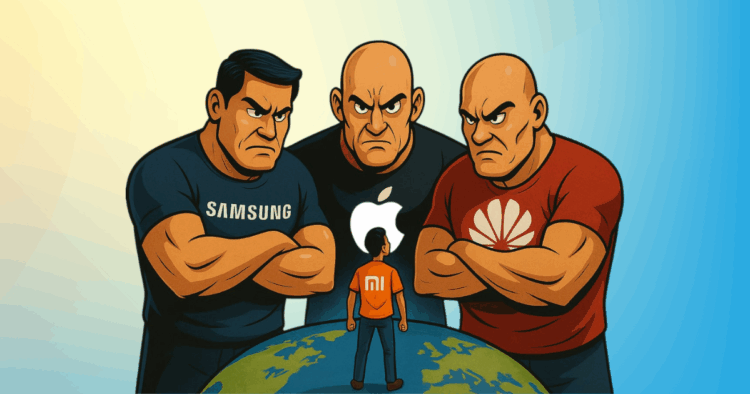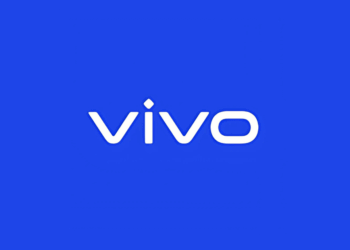The Tech Goliaths Never Saw David Coming
In the high-stakes arena of mobile technology, few stories are as compelling — or as disruptive — as Xiaomi’s rise in Kenya’s mobile tech market. Once dismissed as a budget brand from China, Xiaomi has spent the last five years (2020–2025) quietly rewriting the rules of engagement. While legacy giants like Samsung, Apple, and Transsion Holdings (TECNO, Infinix, Itel) fortified their dominance with deep pockets and brand prestige, Xiaomi chose a different path: aggressive innovation, ruthless pricing, and relentless localization.
The result? A seismic shift in consumer preference, brand loyalty, and market share — not just in Kenya, but across Africa. This is the David vs. Goliath story of our time, and it’s far from over. We dive deep on Xiaomi in Kenya’s Mobile Tech Market.
Market Share: From Footnote to Force
In 2020, Xiaomi’s presence in Kenya was barely a blip — hovering around 2.5% market share, dwarfed by Transsion’s 50%+ grip and Samsung’s steady 20% hold. Fast forward to June 2025, and Xiaomi has surged to 7.46%, overtaking Nokia and threatening Infinix’s position as Kenya’s third-largest Android player.
Across Africa, Xiaomi posted a 32% year-on-year growth in Q1 2025, outpacing OPPO (17%) and even Samsung in some regions. In Egypt and Nigeria, Xiaomi’s Redmi 14C and A-series devices became runaway hits, proving that performance at a price point is the new gold standard.
This isn’t just growth — it’s market insurgency.
Innovation as a Weapon: The Disruption Playbook
While the Goliaths leaned into brand legacy, Xiaomi weaponized innovation:
- Chip Sovereignty: In 2025, Xiaomi unveiled its XRING O1 3nm chip, signaling a bold move into custom silicon — a direct challenge to Qualcomm and MediaTek. This leap mirrors Apple’s A-series dominance, positioning Xiaomi as a serious contender in the high-performance Android space.
- EV Expansion: With the launch of the SU7 electric sedan and upcoming YU7 luxury SUV, Xiaomi is no longer just a phone brand — it’s a mobility disruptor. The SU7’s 400-mile range and dual-motor system rival Tesla’s Model 3, and its integration with Xiaomi’s smart ecosystem is a glimpse into the future of connected living.
- IoT Ecosystem: From smartwatches to air purifiers, Xiaomi’s ecosystem now spans over 200 product categories, creating a sticky user experience that legacy brands struggle to replicate. For example, for audiophiles, the Redmi Buds 5 Pro really stands out among the under ₹20,000 earbuds. Redmi and POCO smartphones hold the fort when it comes to mid-range smartphones. Xiaomi watches (S1 Active, S1 GL, S1 Pro, Mi Watch easily outmatch rival brands when it comes to specs and functionality.
This isn’t just product diversification — it’s strategic entrenchment. Xiaomi, now a major in Kenya’s Mobile Tech Market, could change the whole game.
Customer Preference and Brand Loyalty: The Shift Beneath the Surface
Kenyan consumers are notoriously value-driven, and Xiaomi has mastered the art of delivering premium features at mid-tier prices. Devices like the Redmi Note 14 Pro, Redmi A5, and Buds 5 Pro offer:
- LDAC audio, rivaling Galaxy Buds3 Pro
- 52dB ANC, beating most sub-KSh 20,000 competitors. Not even the Samsung Galaxy Buds3 Pro is a match, pound for pound!
- OLED displays, 5G support, and long battery life — all under KES 25,000
According to recent consumer behavior studies, Xiaomi users exhibit 63.2% brand loyalty, with most indicating that they’d repurchase Xiaomi over its competitors. This is a staggering figure in a market where brand switching is common.
In Nairobi’s retail corridors — from Moi Avenue to Sarit Centre — vendors report a noticeable uptick in Xiaomi inquiries, especially among Gen Z and millennial buyers. The brand’s social value, emotional appeal, and price-performance ratio are driving behavioral loyalty.
Retail Strategy: Localized, Lean, and Lethal
Unlike Apple’s premium-only approach or Samsung’s fragmented A-series push, Xiaomi has adopted a retail-first, omnichannel strategy:
- Partnerships with OnFon Mobile and LOOP have enabled flexible financing, making Xiaomi devices accessible to low-income and youth demographics.
- Localized marketing — including Swahili-language campaigns and influencer collaborations — has deepened cultural resonance. The Maasai Mara picture-inspired Xiaomi campaign attracted numerous tech enthusiasts to the Xiaomi fold and ecosystem.
- Online-first launches via Jumia, Kilimall, and Xiaomi Kenya’s official store have reduced overhead and improved margins.
This lean model has enabled Xiaomi to scale faster, price more competitively, and adapt more quickly than its rivals.
Thought Leadership: What Xiaomi’s Rise Means for the Industry
The implications of Xiaomi’s ascent in Kenya’s mobile tech market are profound:
- Legacy brands must evolve or risk irrelevance. Transsion’s decline from 16.98% to 13.43% in 2025 is a cautionary tale.
- Price is no longer the only king — performance, ecosystem, and innovation now share the throne.
- Retailers and vendors must rethink inventory strategies, prioritizing brands that offer high turnover and low return rates — Xiaomi fits that bill.
- Content creators and tech educators have a new narrative to tell: one of disruption, democratization, and digital empowerment.
For tech executives, Xiaomi’s playbook offers lessons in agility, vertical integration, and consumer intimacy. It serves as a case study for researchers in emerging market penetration. As for critics, it’s a challenge to rethink what “premium” really means.
Comparative Snapshot: Xiaomi vs. the Indomitable Giants (Kenya, 2025)
| Brand | Market Share | Growth Trend | Flagship Strategy | Ecosystem Depth | Brand Loyalty |
| Samsung | 30.32% | Rising | Galaxy A-series, Foldables | Moderate | High |
| TECNO | 13.43% | Declining | Camon & Spark | Shallow | Moderate |
| Infinix | 7.6% | Declining | Zero & Hot series | Shallow | Moderate |
| Xiaomi | 7.46% | Rising | Redmi Note, A-series | Deep | Very High |
| Apple | 4.97% | Stable | iPhone SE, 13, 14 | Closed | High |
Conclusion: The Disruption Is Just Beginning
Xiaomi in Kenya’s mobile tech market is no longer a footnote — it’s a headline. In just five years, the brand has evolved from outsider to insurgent, challenging the dominance of entrenched giants like Samsung, Transsion, and Apple with a playbook built on innovation, affordability, and cultural fluency.
This is not just a tech story. It’s a story of economic empowerment, consumer evolution, and market transformation. Xiaomi’s rise reflects the aspirations of a new generation — one that demands more, pays less, and refuses to settle for legacy prestige over practical value.
As Kenya’s digital economy accelerates, Xiaomi’s trajectory offers a blueprint for what’s possible when David doesn’t just fight Goliath — he outsmarts him. The brand has played smart and offensively, leveraging product depth, ecosystem integration, and aggressive pricing to win over retailers, creators, and everyday users alike.
Xiaomi —the next Dominant Player Across Africa?
We now stand at a pivotal moment — one where we must begin to compare notes on just how well Xiaomi has performed in Kenya and across Africa, not just in terms of specs and sales, but in shifting brand loyalty, reshaping consumer expectations, and redefining what mobile technology means for emerging markets.
For deeper insights, read our feature article: “How Xiaomi Is Redefining Mobile Technology in Kenya and Africa.” It unpacks the undercurrents driving this transformation — from chipset sovereignty to ecosystem stickiness — and lays bare the strategic moves that are rattling the industry’s old guard.
If Xiaomi continues on this trajectory, it will be no surprise if by 2030, it leads not just Kenya’s mobile tech market, but Africa’s — and possibly even challenges global incumbents head-on. Based on its charm offensive, attractive product offerings, and relentless market adaptation, it’s not a question of if — it’s a matter of when.
Xiaomi is the ultimate brand to watch in 2025. And for those still underestimating it, the clock is ticking.

















